Fasteners are used across various industries as an alternative to welding or adhesive bonding. Each type of fastener has unique capabilities, applications, and advantages. Our supplier, PEM®, boasts over 80 years of experience as a leader in the fastener industry. PEM® has continued to invest in the development of its product lines, creating new and innovative ways for designers to assemble their joints. In this text, we will explore some of the most innovative PEM® fastener technologies that have been introduced to the market.

Benefits of Self Clinching Technology
Self-clinching technology has revolutionized fastener production, replacing conventional joining methods like welding. Self-clinching technology offers a cleaner, energy-efficient alternative with proven performance for today's most challenging applications. Engineers and manufacturers across all industries rely on self-clinching technology because it provides stronger joints and enables faster and more efficient production processes. It also has the added benefit of reducing costs, especially for high-volume applications. Compared to other joining methods, self-clinching technology offers greater design flexibility since it can be used to join different materials, which is not possible with welding. The installation process for self-clinching fasteners is also cleaner and more environmentally friendly. Much less energy is required to operate a press than welding equipment, and no post-process is necessary, saving companies time in their operations. There are many reasons why customers have turned to self-clinching technology instead of welding. Some of the key technical advantages of self-clinching technology include: • Providing strong threads or attachments in metal as thin as 0.2 mm (0.008"). • Offering high resistance to both shear and torque. • Not requiring special hole preparation, such as chamfering and deburring. • Being installable using any parallel actuating force. • Leaving the backside of the metal sheet smooth. • Not requiring rethreading after application. • Offering low installation costs. • Being installable using automated equipment for high-volume applications. Self-clinching technology also offers a range of benefits for designers striving to ensure that DFMA parameters are met in their designs. This can include working with fewer parts, fewer assembly steps, and reduced overall assembly time. All of this, in turn, facilitates a shorter time to market, simplified assembly processes, improved quality, and reduced costs throughout the project.
microPEM® Fasteners
Our supplier, PEM®, offers a service called PEMedge® teardown, which has become increasingly popular with their customers where there is a need to minimize space in their assemblies as much as possible. "PEM has identified some areas and seen that thinner sheets are being used, increased use of stainless steel, and tighter constructions that require fastener solutions that allow a designer to reduce the overall footprint. As a result of this, PEM® experts have worked hard over the years to stay up to date with these trends and develop the solutions that can make all of this possible. One of the solutions PEM has developed is microPEM® self-clinching fasteners."
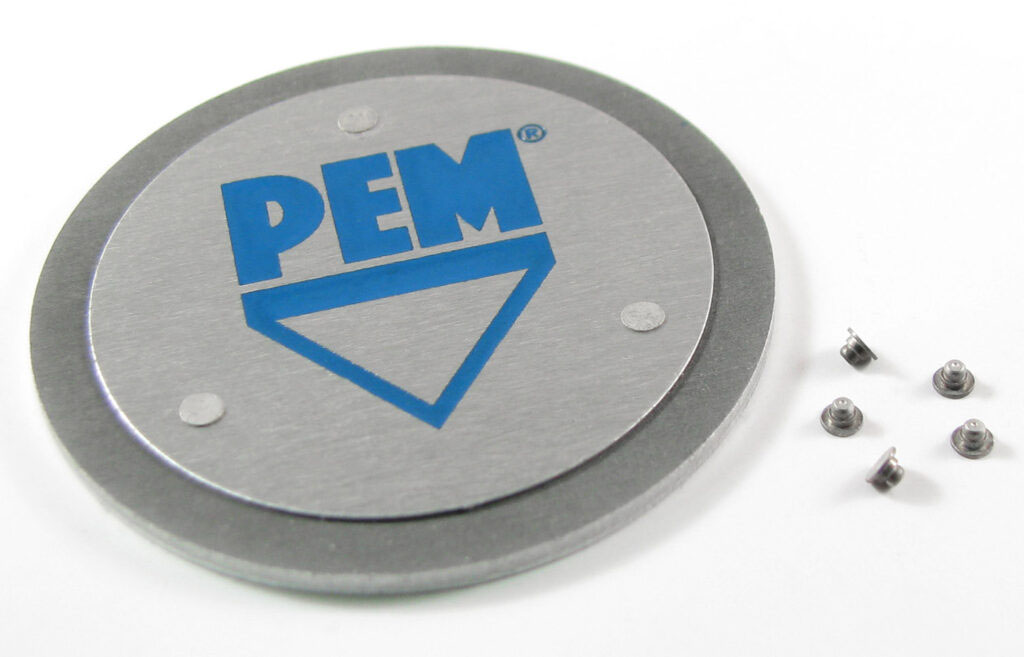
Nine Different Types of microPEM® Fasteners
microPEM® TackPin® Fasteners
"In a design, the cost of the screw is usually a known factor, but the cost of designing and assembling with the screw is unknown. When it comes to working with loose screws, there are a number of associated costs." Such costs can include: • Application of a sealant to prevent vibration. • Use of a thread insert or threaded hole. • Increased installation time - it is faster to press a component into an assembly than to screw it in. • Potential rework costs due to cross-threading. • Additional bits for assembly. • Potential rework costs due to bits coming loose. "What we see in most cases is that a designer may know what a bag of a thousand screws costs, but they may not think about what the total cost of using and assembling their products with these screws is when all of the above factors are taken into account. And that's where TackPin® fasteners offer a huge advantage. With TackPin® fasteners, we are installing a harder fastener into a softer panel. The component offers a strong joining method, has a smaller footprint, and weighs less than a loose screw. It also has a shorter z-height, which is important in compact designs." Other key benefits offered by microPEM® TackPin® fasteners include: • Full 360-degree metal-to-metal contact, supporting grounding or conductivity requirements. • Easy to use, with no risk of cross-threading or bits coming loose during installation. • High performance - stronger in pullout than a screw of the same size. • Lighter weight. • Smaller head footprint, allowing for tighter and more compact designs. All of this leads to cost savings, benefiting both OEMs and manufacturers. TackPin® fasteners offer better performance and savings by eliminating the potential risk of scrapped or damaged parts that can occur when working with loose screws.
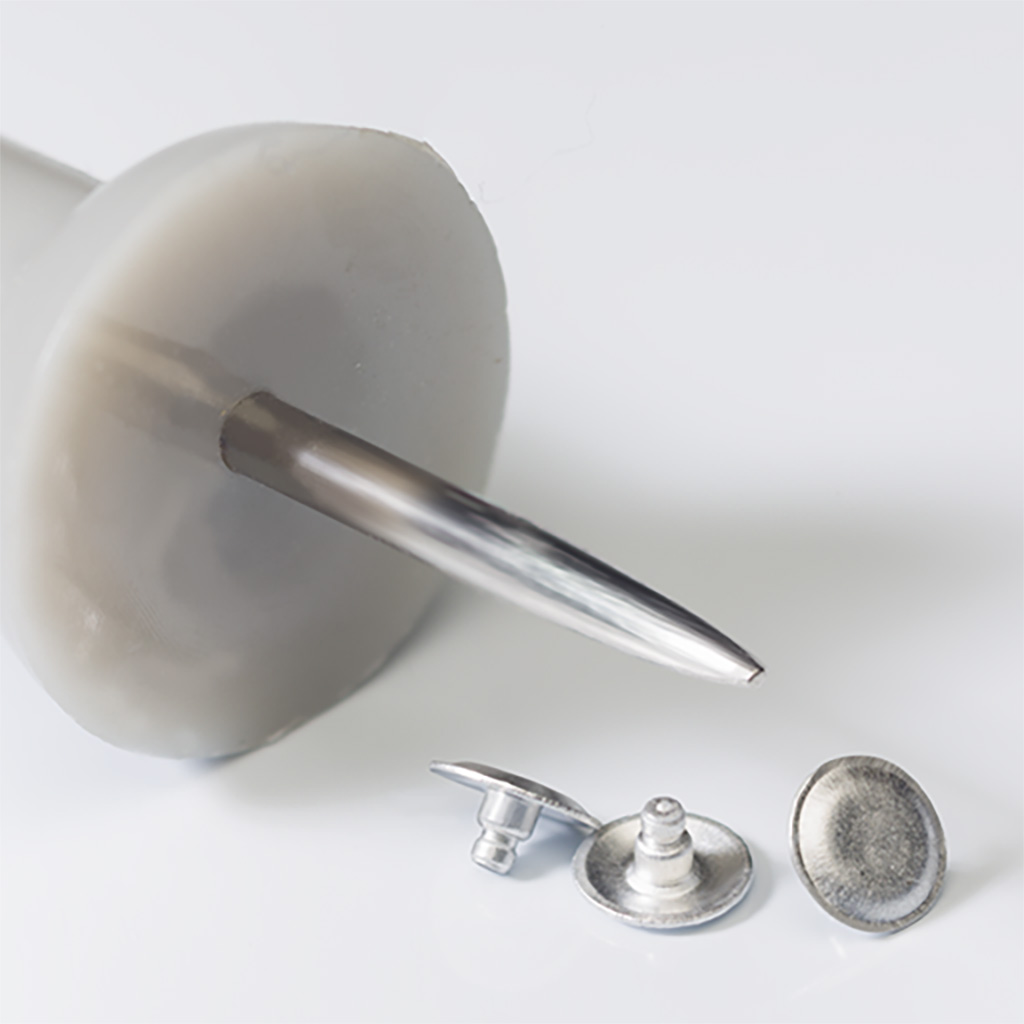
microPEM® FlexTack® Fasteners
"For some applications, there is concern about tolerance in the upper panel. Sometimes it can be as much as +/- 10% of the nominal panel thickness. microPEM® FlexTack® fasteners were designed in response to this challenge." microPEM® FlexTack® fasteners have a Belleville-shaped head that, during installation, clinches into the lower panel like a typical TackPin® fastener. But the head flattens out, helping to draw the panels together. "This feature would be desirable in a product with a touchpoint, like a keyboard, where intolerance would affect performance. With FlexTack® fasteners, this is eliminated, providing a nice, solid panel-to-panel contact."
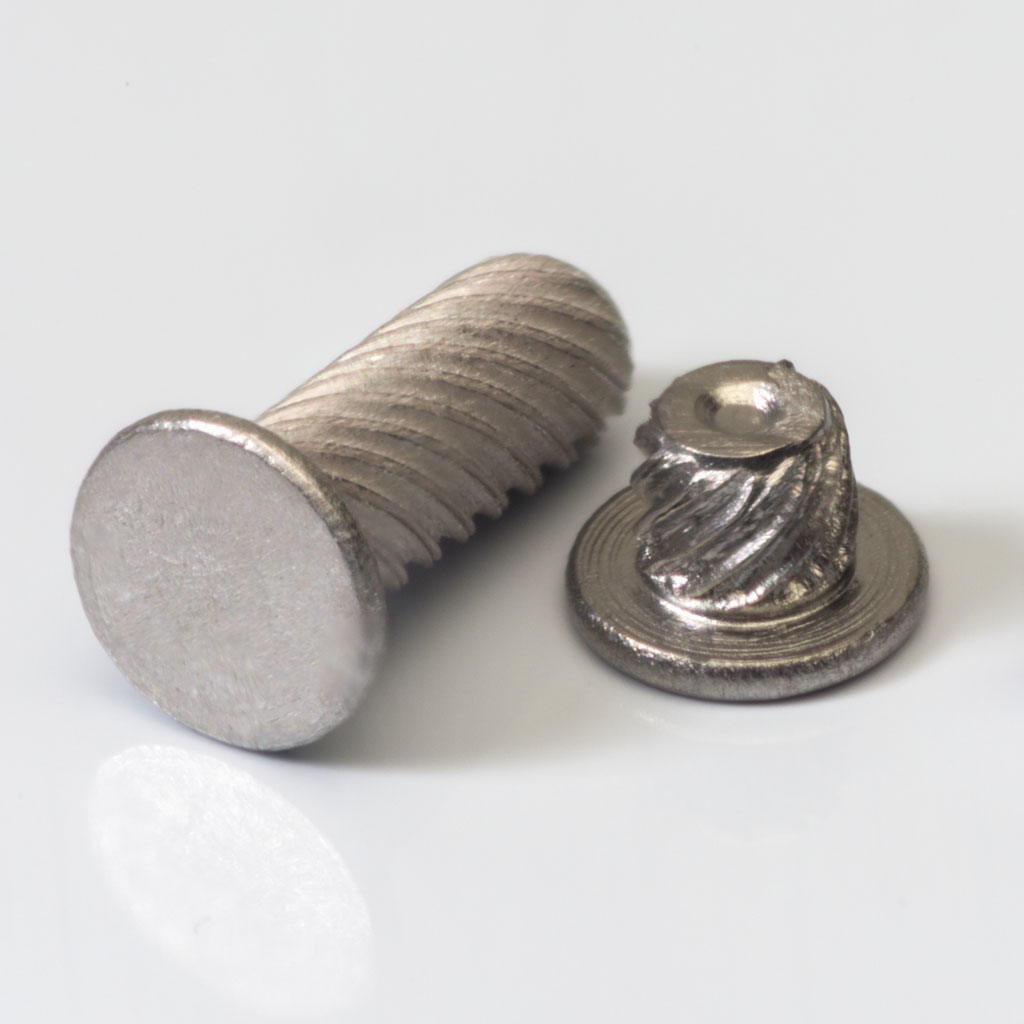
microPEM® TackSert® Fasteners
When working with non-ductile metals or other materials, it becomes necessary to consider a different type of fastener to replace screws. "For applications made with plastic or aluminum and magnesium castings, microPEM® TackSert® fasteners are the recommended solution. It will broach into that material but still hold the upper panel with a head that is much thinner than a standard screw head. TackSert® fasteners offer all the same benefits as TackPin® fasteners. They eliminate the costs associated with threading a screw and the risk of cross-threading while also addressing design issues by providing reduced z-height." Other key benefits of microPEM® TackSert® fasteners include: • Eliminating the risk of cross-threading. • Eliminating the need for inserts or threaded holes. • Reducing the risks associated with torque control. • Eliminating the possibility of vibrating loosening. • Easy to install automatically. • Tamper-resistant.
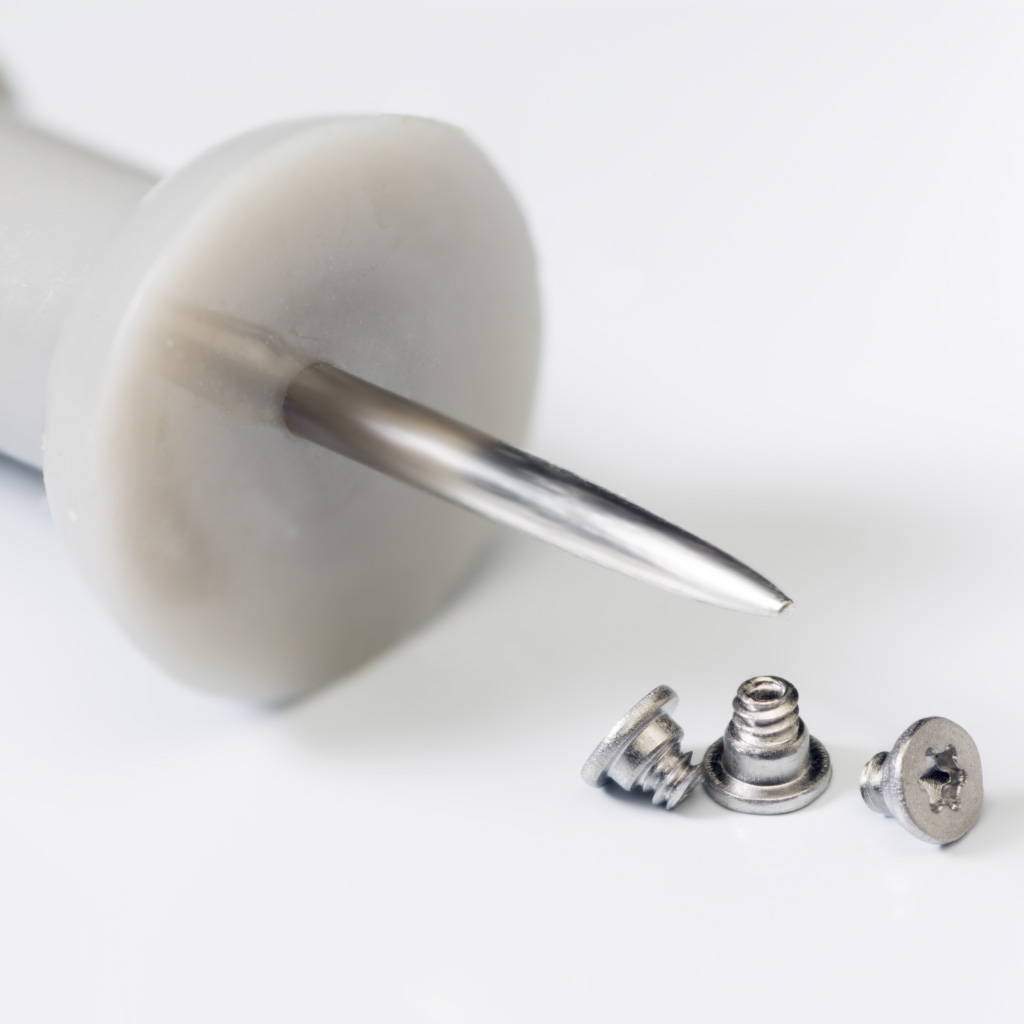
microPEM® TackScrew® Fasteners
"In some applications, the designer may want to eliminate all the risks that come with using a screw, but they have a requirement for repairability. When this is the case, it's necessary to be able to fasten a component in place but still be able to remove it. With repairability becoming a higher priority in the design, TackScrew® fasteners offer all the benefits of a press fastener while still being repairable."
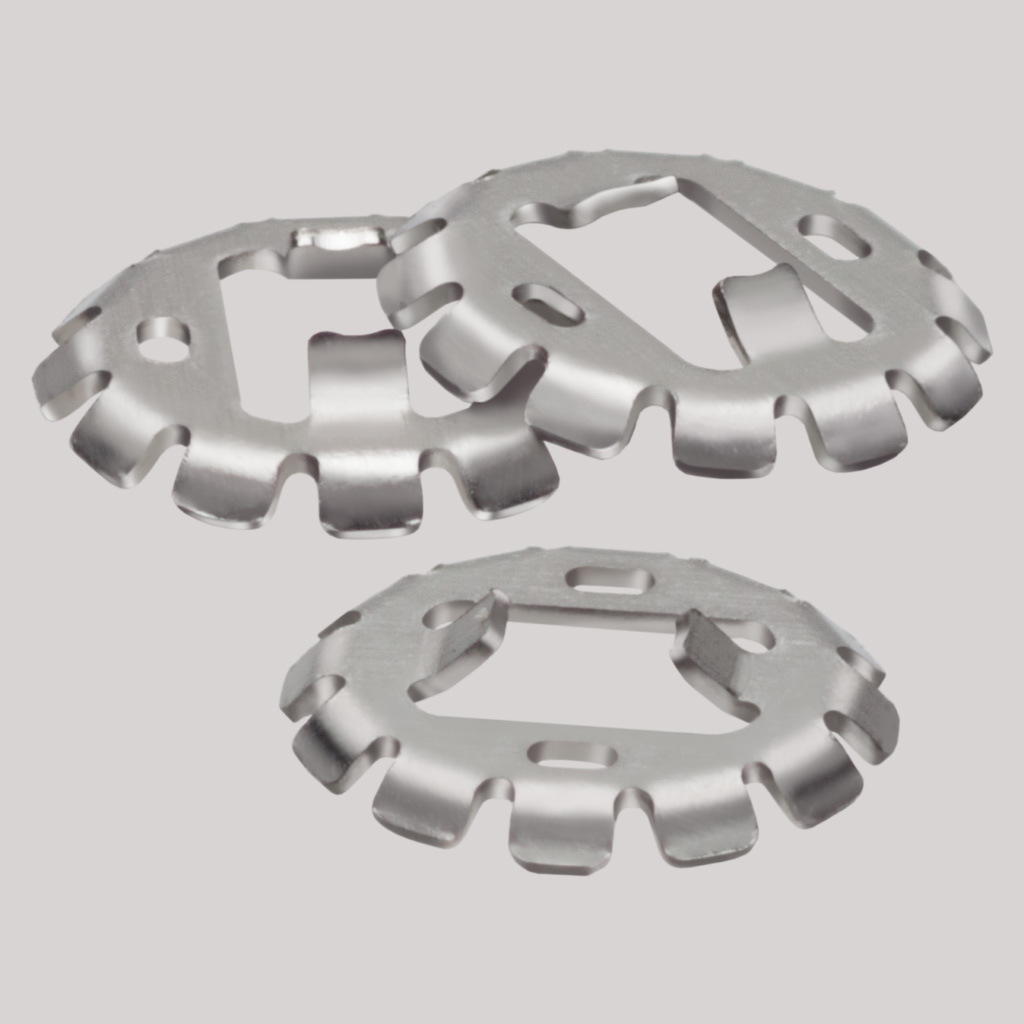
CDS™ microPEM® ClampDisk® Fasteners
ClampDisk® Fasteners press directly onto a 1mm pin to replace threads, adhesives, rivets, and other small fasteners. The upward-facing flanges on the disk grip the pin and prevent it from disengaging, while the downward-facing flanges flex and generate clamping force. This can be a clinched pin or a pin created in a molded design and thus exists as part of the casting. "This part can be removed and bent off with a sharp tool, and then a new part can be placed to reassemble it." Some key benefits offered by ClampDisk® fasteners include: • Clamping force generation. • Easy installation. • Ability to be removed. • Compatibility with multiple panels of any material. • Limited installation stress on the assembly. • Tamper-resistant.
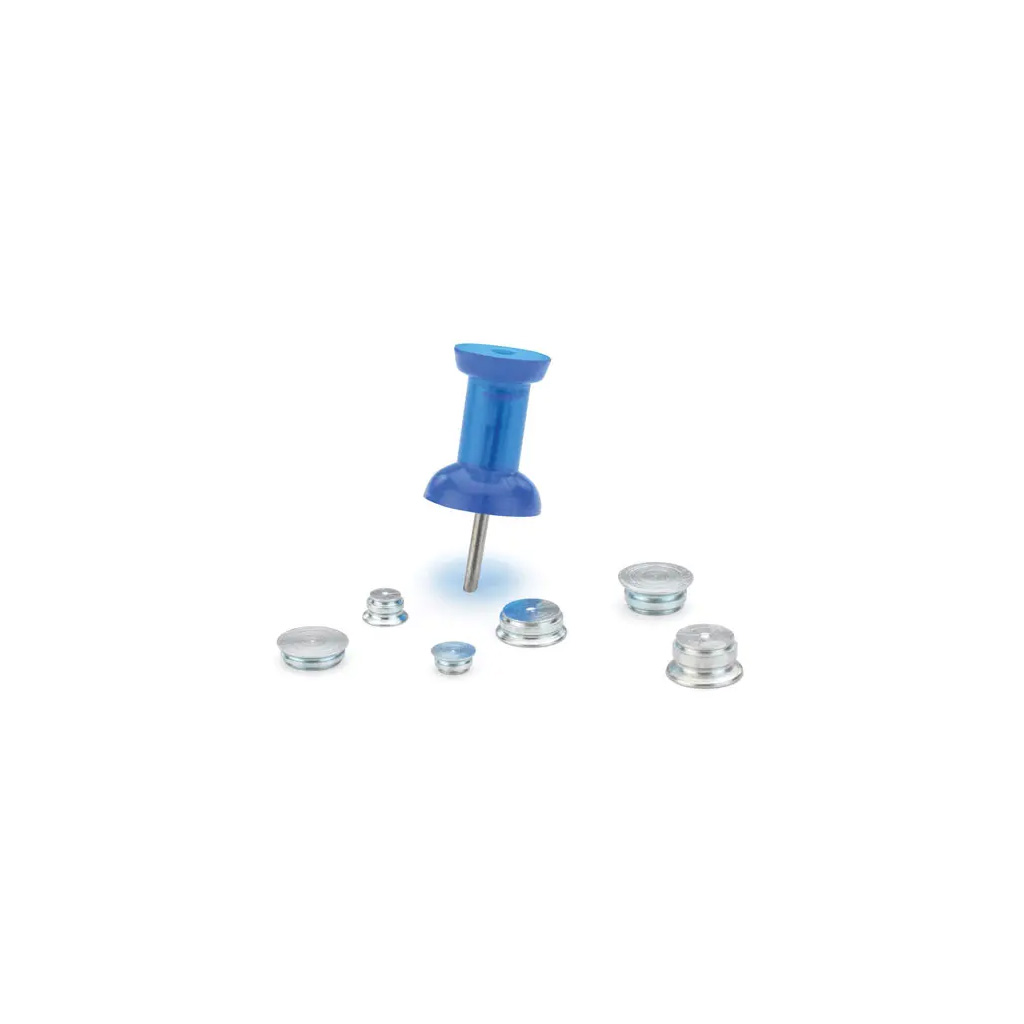
SpotFast® Fasteners
Unlike rivets that "bulge" during installation, the completely flat profile of SpotFast® fasteners allows discreet fastening that requires minimal space. A smooth surface is maintained for post-finishing, and the fasteners can be easily concealed with paint or powder coating. Within the SpotFast® range of PEM® self-clinching fasteners, there are four models SF™ fasteners create a permanent, flat joint between two plates. By pressing the fastener into place, a cold flow of panel material occurs in the fastener's two separate clinch profiles. SF™ fasteners can be used to attach two metal plates that are difficult to weld, to fasten plates with uneven thickness, to join different metals that cannot be welded, or even to fasten ultra-thin metal sections.
SFP™
SFP™ fasteners offer the same advantages as SF™ fasteners but are made from precipitation-hardened stainless steel and are used for installation in stainless steel plates.
SFW™
SFW™ fasteners offer the same advantages as SF™ fasteners but are specially designed to allow pivoting between two metal plates. A wave washer provides even pivoting for repeatable rotation.
SFK™
SFK™ fasteners are designed for flat joining of metal with PCB/plastic/molded panels.
SFN™
Spinning Flare Nut "SFN™ spinning flare nuts have been designed to eliminate loose parts in an assembly. Typically, you have a clinch pin in the upper panel, and then a loose nut is threaded onto it to secure the two panels together. But for some applications, loose parts can be a challenge for manufacturers and engineers responsible for maintenance. With SFN™ nuts, when the part is pressed into a properly sized, pre-punched mounting hole, it offers no torque resistance and allows it to spin freely in place, allowing for quick attachment to the mating part. When you remove the nut, the panels separate. When you reassemble them, they come back together. It is easy to assemble and disassemble repeatedly without losing any parts."
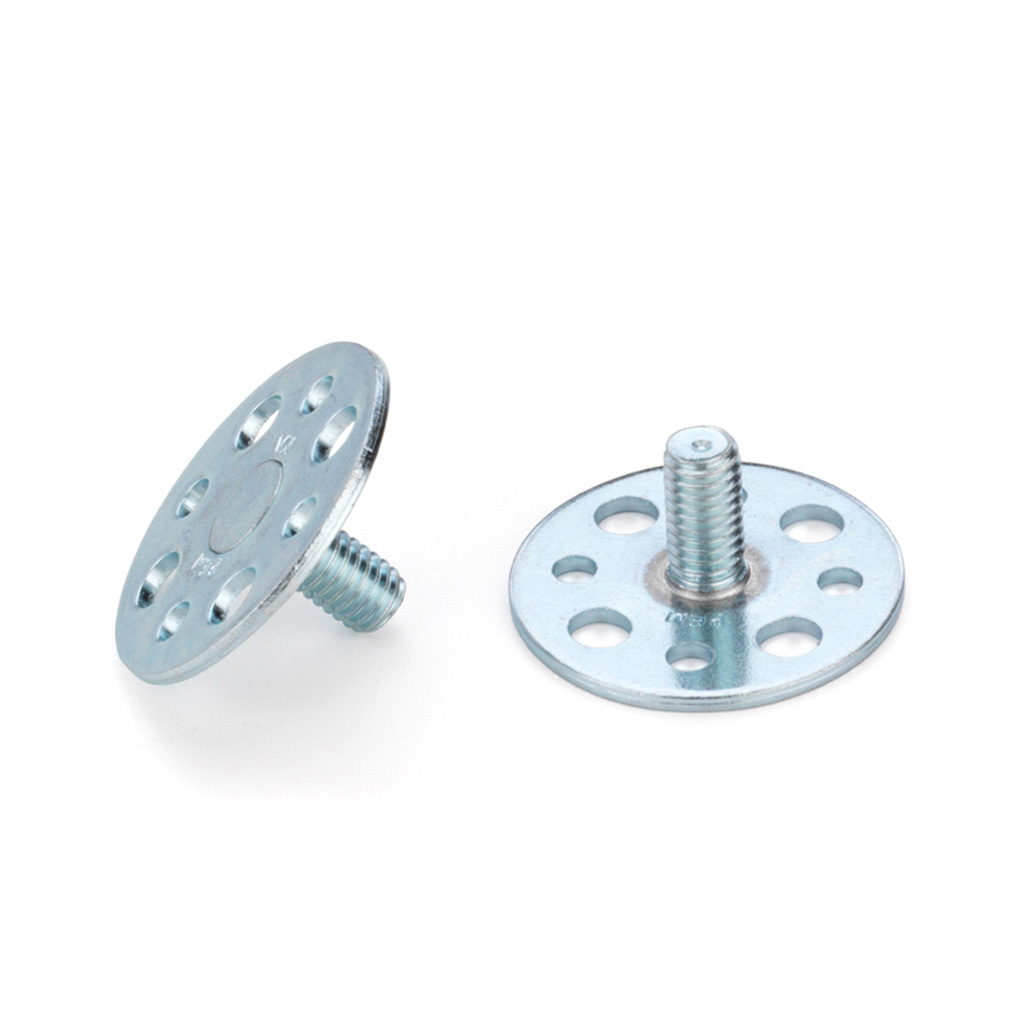
VariMount® Bonding Fasteners
The VariMount® fastening system eliminates welding issues. The assembly consists of a standard PEM® nut, pin, or spacer permanently mounted in a base plate. The assembly can then be attached to different panel types in various ways. Mounting methods for VariMount® fasteners include: • Casting. • Laminating with composite layers. • Surface bonding. • Rivets. • Loose parts (nuts, bolts, screws). • Self-clinching fasteners. • Blind threaded rivets. • Adhesive or tape. • Blind rivets. "VariMount® bonding fasteners can be mounted on or into a variety of materials, including composites, plastics, metals, gypsum board, and any rigid material or panel."

GHOST™ Magnetic Fastening
Currently part of the PEM® range as a technical solution, GHOST™ magnetic fasteners are ideal for achieving high security and elegant aesthetics. When fully released as part of the PEM® product lineup, it will offer a completely hidden fastening solution with zero visible evidence of disassembly when engaged. "GHOST™ fasteners allow assembly and disassembly with nearly immediate release during the disassembly process facilitated by a specialized magnetic tool," It has an ultra-light design, and the hidden nature of this product opens up several design possibilities across different industries and market sectors. "By using a magnetic release tool on the hidden fastener, it activates the internal components, unlocks the pinch-lock grip, and immediately releases the pin from the fastener. Only someone authorized with the right tool will know where to place it to locate and release these components if needed." It also offers cosmetic benefits, but when it comes to security, it's a significant improvement over other mounting methods. If you were to try to separate the component physically without using the tool, it would require approximately 130 newton force to separate each pin from its holder, and it would be obvious that the assembly had been tampered with."
Do you have any questions about PEM's press fasteners?
Do you need more information about any of our innovative solutions? Feel free to contact us at Aero Materiel; we are ready to assist you with your specific needs and projects. We are committed to providing the best solutions for your challenges.
To get in touch with us, please fill out the form below. We will get back to you as soon as possible with answers to your questions and further information on how our products can help you achieve your goals.
Thank you for choosing Aero Materiel and PEM for your press fastener needs. We look forward to helping you achieve strong, reliable, and cost-effective joints in your projects.

